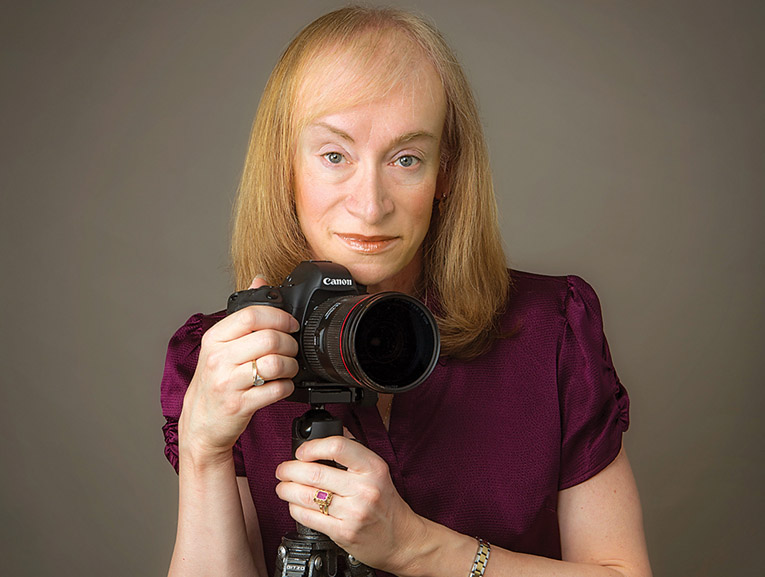Hidden messages in digital images are Binghamton professor’s research passion
Watson College's Jessica Fridrich receives $768,964 grant to further steganography studies

For more than 25 years, Distinguished Professor Jessica Fridrich has studied digital-image steganography — the science of hiding messages inside ordinary-looking photos.
Just as technology has evolved and become more sophisticated, so have the methods to share secrets — and a recent $768,964 grant from the National Science Foundation will help Fridrich stay ahead of the curve.
“This is a continuation of a chain of grants that started back in 1995, so it’s something I’ve been doing for a long time — but it’s still relevant,” said Fridrich, a faculty member in the Department of Electrical and Computer Engineering at Binghamton University’s Thomas J. Watson College of Engineering and Applied Science. “There are still many open questions in the field.”
At the heart of steganography is the idea that someone can look at a file, message, image or video and not realize that there is anything hidden. Before digital technology, techniques could include invisible ink, small notes on envelopes hidden under postage stamps or knitting coded messages into clothing.
Digital files — particularly ones for audio, videos or photos — are considered ideal for steganographic transmission because of their large size. The need for such technology goes beyond the kind of espionage we see in spy films to homeland security, military planning and protecting the privacy of citizens in countries that censor communication channels or prohibit the use of encryption.
“No one should be able to tell that something is hidden inside when they look at the image or analyze it using sophisticated algorithms,” Fridrich said. “If you can tell that the image has been altered, then the communication system has been broken. You don’t even need to be able to read the message — you are still losing the advantage of the stealthiness.”
Among the questions that Fridrich will explore with the NSF grant is a theoretically better-founded design of steganographic schemes. Currently, many data hiding methods are based on heuristics, a pragmatic approach that works fairly well but relies on approximations.
“People were designing something that made a lot of sense, but nevertheless, at the bottom of it you could not have mathematical guarantees or established error rates,” Fridrich said. “You couldn’t say how theoretically possible it was to detect the hidden message or how long the message should be in order to stay under a certain level of undetectability.
“As a user of the system, you want to know you can hide a message that has a certain length or size, and you don’t want to worry about being detected.”
The NSF project will study the principles and limits of stealth digital communication by starting with a detailed mathematical understanding of how a digital image is formed inside of a camera. That model — developed through statistical hypothesis, deep learning, deep neural networks, pixel analysis and more — would provide users a provable assurance of how secure a particular steganographic system is.
“You have to consider how these images were created, and it’s a combination of hardware acquisition and what happens with processing inside the device,” Fridrich said. “That’s extremely complicated, so getting those models has become virtually impossible. Digital cameras 20 years ago were super-simple — they had half a megapixel or a quarter of a megapixel, and you’d have a floppy disc inside that held only one megabyte of data.”
The research from Fridrich and her Binghamton students over the years has contributed greatly to steganography as well as the related fields of steganalysis (discovering hidden messages) and digital forensics (identifying which portion of an image has been altered, what kind of camera took the image and what type of enhancement it was subjected to).
When Fridrich began studying digital steganography, having a camera that didn’t require film was still a novel idea. Today, all of us have cameras on our phones that far surpass the quality that we used to expect from photo or film studios.
In 2008, she wrote a textbook on the subject, but she found that “a large chunk of it became obsolete in a few years” as the science rapidly progressed. Still, she appreciates how steganography has no shortage of ideas for further research.
“It’s exciting, because there’s always something new to do,” she said. “At the same time, it can be a little frustrating because the field as well as the technology are developing so fast. People ask, ‘When are you planning to write your next book?’ and I say, ‘I’m not planning on doing it anytime soon!’”
Fridrich’s project, titled “Steganography Based on Sensor Capture Models: Replacing Heuristics with Model-Based Designs,” is NSF grant #2028119.
